Phase 4 — Mastering the Gentleman Spy Skill Set
Lesson 1 — Close Quarters Combat
LESSON 1: Close Quarters Combat
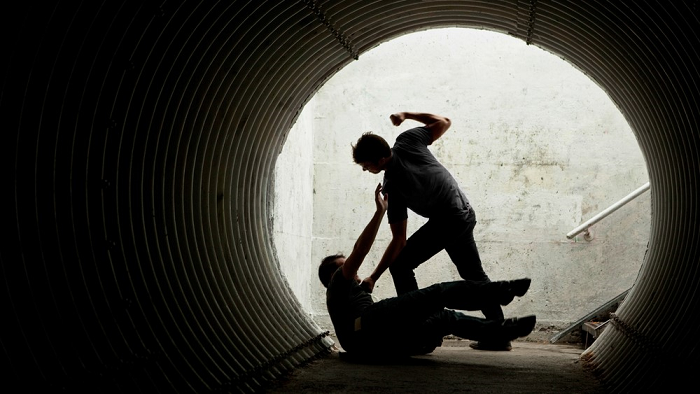
So are we going to stand around all day, or are we going to fight?
~Galahad (Kingsman: The Secret Service)
Fighting has changed.
The days of standing outside trading blows to settle an argument are over, and it can no longer be expected that most street thugs are punk kids filled with aggression but little skill.
The kinds of people that are going to mug you on the street, that will hold up a store that you’re shopping in, or try to carjack you, are the types of people for whom fighting is a daily way of life. They might not be formally trained, but they may very well be.
With the advent of the internet and the popularity of mixed martial arts competitions like the Ultimate Fighting Championship, it can be expected that your opponent will be big, strong, experienced, and armed with something deadlier than just their fists.
“Hand to hand fighting” has become “close quarters combat.”
The traditional martial arts like Karate, Tae Kwan Do, or Kung Fu, where you spend an hour per week wearing a gi and bowing before practicing katas don't cut it anymore. They may look nice and they may make you feel better about yourself, but when the fight is against multiple attackers who are likely armed with knives or guns, they simply don’t work.
As the popularity of MMA has spawned a new generation of dangerous attackers, it has also led to the development and refinement of highly effective combative systems that have been vetted on the streets and war zones around the world.
Those who spend their lives in dangerous places have come to realize the combination of mixed martial arts, coupled with a modern combatives system, make you devastatingly effective.
Mixed Martial Arts
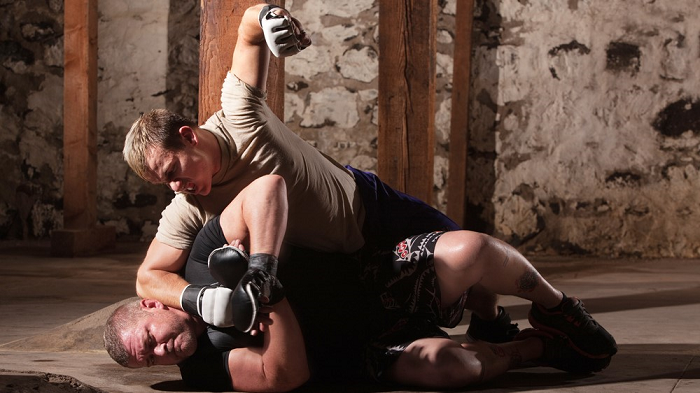
When referring to mixed martial arts, this means the modern combination of Muay Thai (Thai kickboxing) and Brazilian Jiu Jitsu (BJJ).
When the Ultimate Fighting Championship debuted, it included the best fighters in the world in all kinds of styles. Boxers versus Karate masters, sumo wrestlers versus Thai kickboxers, and everything in between.
The outcomes of these fights were instructive:
In no-holes barred competition, standup fighters stood little chance against the ground fighters if they were taken down, yet if the fighters remained standing the kickboxers reigned supreme.
Fighters quickly adapted to this new paradigm and adapted the two best systems — Muay Thai kickboxing and Brazilian Jiu Jitsu ground fighting — into one cohesive skill set.
Allowing its practitioners to dominate any fight — standing up or on the ground — the combination of Muay Thai + BJJ is the most effective empty-hand fighting system in history.
With millions of practitioners and and billions of hours spent fighting in gyms, rings, streets, and war zones, modern MMA is the most thoroughly vetted and effective system in the world.
This is what you’ll begin learning to fight.
Traditional martial arts (Karate, TKD, etc.) studios still dot the landscape of every city and suburban town, but MMA gyms are becoming more accessible. In any city, you should be able to find at least one gym to train at, and you’ll likely have your pick among a few different choices.
Because of MMA's popularity, many gyms are run by karate or tae kwon do instructors who have jumped on the MMA bandwagon. These will do if you don't have anything else available, but if possible, you’ll want to choose a gym that has a competitive fight team — a fight team that travels and actually competes.
Some schools have a “beginner’s MMA” program where beginners will be thrust directly into the full spectrum of training, from boxing to Muay Thai to BJJ. Often, however, you will start with beginner’s Muay Thai one day, and beginner’s Brazilian Jiu Jitsu the next.
Once reaching a certain level of proficiency in the separate disciplines, you will be able to start training in full MMA. A common class schedule will often look like Mon: Muay Thai; Tues: BJJ; Wed: Muay Thai; Thur: BJJ; Fri: Fighting/Sparring.
You don’t need to train full-time in this unless you want to be a professional fighter, but having a better than average skill set here may very well be the difference between life and death if you find yourself in a fight.
Go through the progressions until you are ready to start sparring consistently.
This will take some time but push yourself until you are comfortable and confident in full contact sparring. As Mike Tyson said, "everybody has a plan 'till they get punched in the mouth." The only way to work through that is to get punched in the face (and punch others in the face) and learn how to maneuver and work through the stress that comes with it.
Getting Started
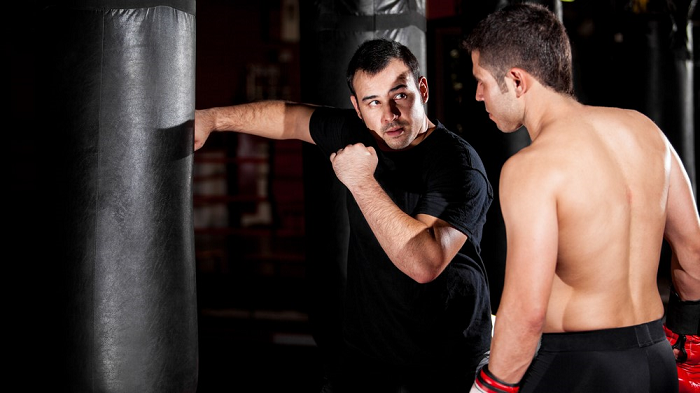
- Purchase a cup and mouthguard
- Download the MMA and Combatives Checklist. This will give you an idea of the equipment you'll be needing. You don't need everything on the list, but you do need at least a cup and a mouthguard immediately.
- Download the MMA and Combatives Checklist. This will give you an idea of the equipment you'll be needing. You don't need everything on the list, but you do need at least a cup and a mouthguard immediately.
- Find a gym
- MMA gyms are everywhere now and range from top-tier facilities that produce professional fighters, to bottom-of-the-barrel joints that are more of a liability than an asset. When searching for a gym, keep the following in mind:
- Are they willing to answer your questions?
- Does it look reputable?
- Price? Most reputable gyms run between $125–250/month; if you're paying less, you're probably getting less.
- Ask about credentials. Are the instructors just old karate or tae kwon do black belts who jumped on the MMA bandwagon, or do they have certification from a recognized MMA school, fight professionally, have competitive Muay Thai or BJJ experience, etc.?
- Do professional fighters train at the gym? If you want to fight competitively, your odds of doing so are enhanced by training at a gym that trains professionals.
- Observe the classes, instructors, and other students. Many people drawn to MMA are assholes who just want to fight. If the gym doesn't weed these people out, that's a sure sign that unprofessional conduct is tolerated or condoned, and you should find somewhere else to train.
- MMA gyms are everywhere now and range from top-tier facilities that produce professional fighters, to bottom-of-the-barrel joints that are more of a liability than an asset. When searching for a gym, keep the following in mind:
- Schedule an introductory class
- Most reputable gyms offer at least one free class. Many offer a free week of classes. Take advantage of this.
- Assuming there are multiple good gyms in your area, schedule and take advantage of the trial offers at your top 2–5 choices.
- Training for a few days or weeks at different gyms will give you a better idea of the class structure, environment, and attitudes you work best with. MMA training is a real commitment and you want to make sure you get the most out of it, so take your time choosing your gym wisely.
- Trust your gut
- Once you've taken an introductory class or gone through longer trial periods at various gyms, trust your gut and go with the gym that feels best.
Pick up the equipment you need, start doing your research, and get training. Develop the fighting capacity you need.
Combatives Systems

After getting a basic competency in MMA, you should branch out into another combatives program.
When we say “combatives systems,” what are we talking about?
As alluded to before, these are not the old-school form-based martial arts of your parents or grandparents.
Better than any other programs, Sayoc Kali, Systema, and Krav Maga integrate striking, ground fighting, edged weapons, projectiling (throwing), impact weapons, and firearms into a holistic system that will keep you alive when the going gets tough.
Your empty hand skills are more likely to be needed — hence the reason for starting with MMA — but a good combatives program will give you the tools to integrate knives, sticks, pipes, and whatever other tools you find at your disposal. This ability to effectively employ almost anything you find on the street as a weapon can prove invaluable.
There is no need to study all three systems; any one of them will give you a solid understanding of knife fighting and other improvised weapons. These schools, however, are less accessible than a normal MMA gym and unless you live in a large city, you’re unlikely to find all of them — you’re usually lucky to have one or the other within an hour drive of you.
If you can find a reputable trainer in any combative discipline, you owe it to yourself to check it out.
Sayoc Kali (and more broadly, most Filipino Martial Arts including Atienza Kali and Eskrima)

“All blade, all the time” is the motto of Sayoc Kali. With a massive emphasis on blade work, it also covers batons, projectiling (throwing knives or other objects), improvised weapons, and empty hand skills.
Focusing first on knife-accessible “vital templates” — the carotid arteries, the lower abdomen, the throat, the perineum, the armpits, the femoral arteries, and then a power-assisted two-handed cut across the throat — Sayoc Kali uses transition drills, multi-man drills, training modifiers and target-specific tapping against intelligent, skilled and resisting opponents.
A feeder-based system, Sayoc Kali’s basic drills are designed with the aggressor in mind. Whether training as the feeder (aggressor) or receiver (defender), armed or unarmed, the basic movement patterns are proactive, rather than reactive — designed to get inside the opponent’s OODA loop. This aggressive approach means the opponent is always falling further and further behind allowing you to gain the upper hand in any situation.
Most Filipino martial arts (FMAs) use very similar protocols and methodology, so if you can find a Sayoc instructor, you can look towards Atienza Kali, Eskrima/Arnis, Pekiti Tirsia Kali, etc.
Systema – (Система) Russian Martial Arts

Systema is an ancient Russian martial art that has been adapted for use by Russian Special Operations units and their spy network.
Devastatingly effective, Systema covers everything from hand to hand skills to any available weapons in any and all combat environments. Like Kali, Systema covers knife fighting and improvised weapons, but also integrates firearms into the training progressions more regularly than other systems.
With no forms or katas to memorize, Systema is focused on natural movement and controlling the six body levers — the elbows, neck, knees, waist, ankles, and shoulders — through pressure point application, striking, and weapons application.
Training in Systema will include work on breathing and breath control.
Use of kettlebells, either for exercise or simply as training stimulus is also common.
The focus on natural movement also includes a lot of training in rolling and mobility, so this is also a good choice if you don’t have access to a parkour gym near you — many of the movement patterns are similar and translate very well between the disciplines.
Largely because of the focus on natural movement, Systema allows a continuum of force that affords you more options than the Kalis or Krav Maga for dealing with unruly, but maybe not truly dangerous, people. It is aggressive enough to deal with the most violent of encounters, while gentle enough to deal with a drunk at a bar without going to jail for doing so.
Krav Maga - (קְרַב מַגָּע) Israeli Martial Arts
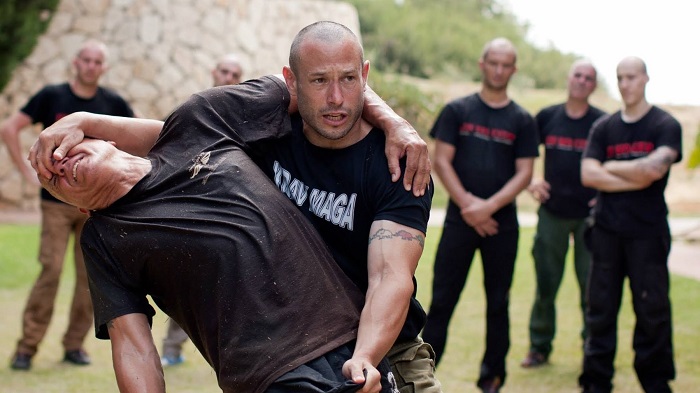
Translated from Hebrew, the name means "contact combat."
Designed for the Israeli Defense Forces as a system that is easily trained and practiced, and heavily promoted in the United States, Krav Maga training will be more accessible for most people than the Filipino Martial Arts or Systema. But that popularity comes with a price — there are many KM gyms and trainers with only the most basic qualifications, so do your homework and choose an experienced and well-vetted trainer.
Krav Maga focuses on counterattacking (or preemptively attacking) as soon as possible, and targeting those attacks to the body's most vulnerable points: the eyes, neck, face, solar plexus, groin, ribs, knees, feet, fingers, etc.
Arguably the most aggressive system, it is focused on ending a fight as quickly and efficiently as possible. In contrast to the use of force continuum offered in Systema, Krav Maga is more violent and more likely to end a fight with serious injury to the bad guy.
Krav Maga, while arguably quite effective, is also one of the prime reasons that it is recommended to become proficient in modern mixed martial arts before relying on combatives training only.
While KM may be quite effective in hand to hand fighting, it does not appear to be as well vetted as a system (e.g. no, few, or unsuccessful Krav Maga UFC fighters).
Additionally, full speed, full contact sparring is not generally introduced until you've been training for years in the program, which, at least for realistic self defense purposes, is not as productive as it could be.
Krav Maga makes the list of recommended combatives programs only with reservations: vet your instructor and don't use it as your sole source training.
Standalone Seminars

Your mixed martial arts training should come first. Your combatives training will fill in holes like knife and improvised weapons training.
Also worth checking out, but highly variable, are standalone seminars from various experts. These run the gamut from self-defense seminars, to one day knife training events, to weekend training classes. Take these seminars in addition to your normal training, and/or make use of combatives seminars if you are unable to obtain regularly scheduled instruction near you.
While there are dozens of highly qualified and specialized instructors available, and hundreds more with varying degrees of legitimacy, there are standout programs like ShivWorks. With a course catalog including Edged Weapon Overview, Extreme Close Quarters Combat, Armed Movement in Structures, and Vehicle Combatives and Shooting Tactics, these types of seminars and training are exceptional in their content and ability to open your eyes to realities not often experienced in a normal training paradigm.
Other programs or seminars to think about include Tony Blauer's SPEAR system, Ernest Emerson's Combat System or Edged Weapons Training Program, and any Kali and/or Systema seminars or camps you find available.
No matter your background or current training looks like, there is always more you can learn. Expand your horizons and get to work.
Training On Your Own
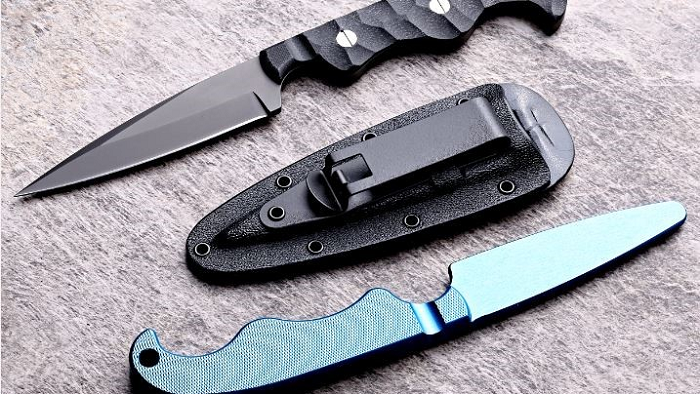
There is a very high likelihood that it will be difficult — because of schedule, money, or lack of qualified instructors near you — to obtain combatives training. But that doesn't mean you can't train yourself.
Your best bet is to find a training group or partner. Get a friend, join Facebook groups, Meetup.com, or post a Craigslist ad to find somebody with similar training interests. Some programs offer tools (Sayoc Kali, Systema) to help find a training partner or group. If you decide you want to become serious about training but don't have an instructor near you, you could even start your own training group.
The next option is to purchase training videos:
- Sayoc Kali
- Systema (Vladmir Vasilev or Martin Wheeler)
- Krav Maga
Buy the videos and get whatever tools you need to start practicing at home.
Whichever option you decide, make sure you get some type of additional training done with knives, sticks, improvised weapons, etc. to compliment your MMA training and make you a well-rounded fighter.
PROGRAM
DOWNLOADS
 MMA and Combatives Checklist
MMA and Combatives ChecklistThis checklist covers the equipment you need to train properly and safely. From a quality mouth guard and cup to boxing gloves and training blades, this checklist includes everything you need to get started with MMA and combatives training the right way.
In the next lesson...
Living like a Gentleman Spy means being good with a gun, but don't just rush out to buy the Walther PPK like 007 uses. Learn your way around guns. Know what you need to look for in a trainer and a fighting man's gun.
